The Century of Biology
This article was originally posted on Maddyness on 23 June 2023.
The 20th century was the century of chemistry and physics. Harnessing the physical properties of atoms and molecules, scientists and engineers produced ammonia fertilizer, refined petrochemicals, unleashed energy from hydrocarbons, created novel plastics, and built the atomic bomb. The 21st century will be one of biology.
Around the globe, scientists and engineers are harnessing the magnificent properties of living systems and organisms to conjure magic: cell-based meat; enzymes that convert waste into valuable minerals and chemicals; microbes that produce proteins with novel functions, and biofuels.
What is driving this revolution? At a societal level, there is increasing demand for more sustainable and environmentally friendly manufacturing methods. To tackle climate change, businesses and governments need to decarbonize industrial processes, construction, and food systems. Chemicals, food, vaccines, energy, and materials can all be manufactured using biology, allowing the replacement of carbon-intensive petrochemicals and animal proteins. Biomanufacturing presents a compelling route forward and is recognized as one of society’s most important tools in the fight against climate change. It is also a critical foundation of the healthcare industry. In the coming years, many more industries will adopt biotechnology.
Secondly, dramatic reductions in the costs of DNA sequencing and exponential increases in computational power and artificial intelligence are propelling synthetic biology forward. Increasingly, we can model biology virtually, “in silico”, running experiments on a computer rather than in a lab. Just as Moore’s law was prescient for computer chips, the declining cost curves of the technologies underpinning the biological revolution show no sign of abating. The advancements taking place in synthetic biology are exponential.
And, finally, government regulation is adding fuel to the bioeconomy. In a report to President Biden, the Council of Advisors on Science and Technology wrote, “We are on the cusp of a new industrial revolution—a revolution emerging from astounding advancements in biotechnology, such as the RNA-based vaccines that are now saving countless lives around the world. Biotechnology will soon provide us with the ability to program our own cells to cure disease, harvest meat without the worries of climate impact, engineer microbes to break down plastic in landfills, and use biomass—in place of petrochemicals—to make the materials and chemicals we use in our daily lives.” Biden also launched, by Executive Order, a National Biotechnology and Biomanufacturing Initiative for “Advancing Biotechnology and Biomanufacturing Innovation for a Sustainable, Safe, and Secure American.” This Executive Order channels more than $2B worth of subsidies and incentives to the American biomanufacturing industry, encouraging R&D and the build-out of onshore infrastructure.
The size of the potential bioeconomy market is impressive. McKinsey anticipates that this “bio revolution” could have a direct global impact of up to $4T per year over the next 10-20 years, enabling the production of 60% of the global economy’s physical inputs. BCG estimates that a shift to alternative protein alone would save over 6Gt of CO2e by 2030, 11% of projected current emissions. In 2019, KVB research estimated that the global fermentation chemicals market will reach $78B by 2025 and Schmidt Futures predicts the future global bioeconomy will be worth somewhere between $4T and $30T. The chemical industry, a ‘hard to abate’ sector, is responsible for over 3GT of emissions and nearly $5T of global GDP annually. These are not billion-dollar markets but trillion-dollar markets.
To make the above figures more tangible, consider Novo Nordisk, the Danish pharma company that specialises in proteins. Novo has a market cap of $260B while its sister company and spin-off, Novozymes, which produces industrial enzymes and microorganisms, is valued at ~$13B. Combined, their market cap is on par with many of the largest US technology companies. The best of the next generation of biomanufacturing startups will rival the scale of the first-generation cohorts, such as Novozymes.
Biomanufacturing production processes today are legacy and lack the efficiency or industrial scale to bring down prices to competitive levels, particularly for novel technologies and products like synthetic foods. Software and machine learning must be deployed to improve yields, reduce costs, and enable real-time optimization. And institutional capital needs to be unlocked to build out the infrastructure for biomanufacturing plants.
But brick by brick, these blockers will be tackled, in part by emerging start-ups capitalizing on the opportunity. As this infrastructure is built out, more novel products and companies will be built on top of it, at the ‘application’ layer. The innovation coming down the pipe from start-ups across a huge number of verticals is striking.
The venture industry has so far underestimated the potential of biomanufacturing as a core theme of climate technology. Our focus at Giant has been to identify the best ‘picks and shovels’ startups that will enable and benefit from the rising tide of this megatrend. These include companies such as Synonym, which develops, finances, and builds infrastructure for the emerging bioeconomy via its asset-light platform and Invert, a machine-learning software platform that improves biomanufacturing yields. We believe they are at the forefront of a century that will be defined by biology.
Cameron McLain is the co-founder of Giant, the global venture capital firm backing purpose-driven technology founders.

